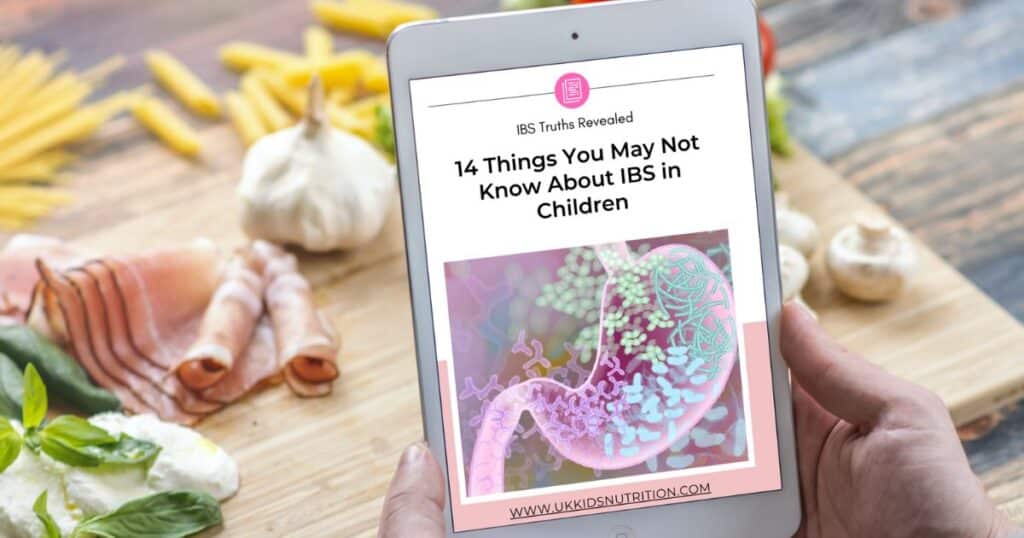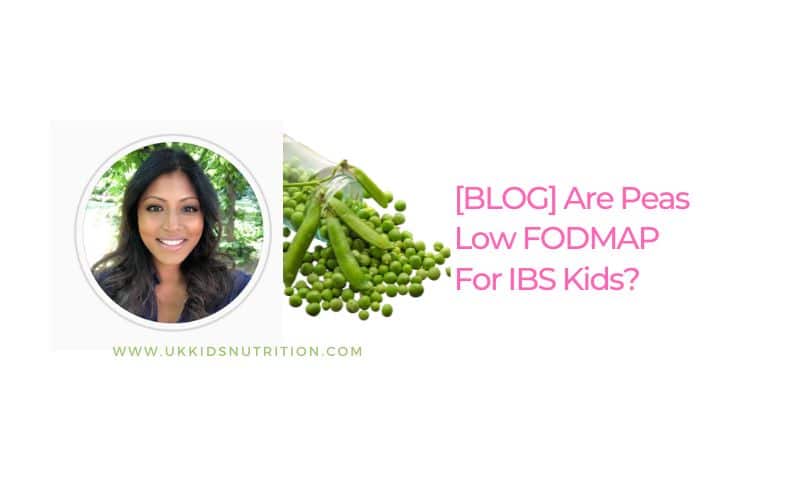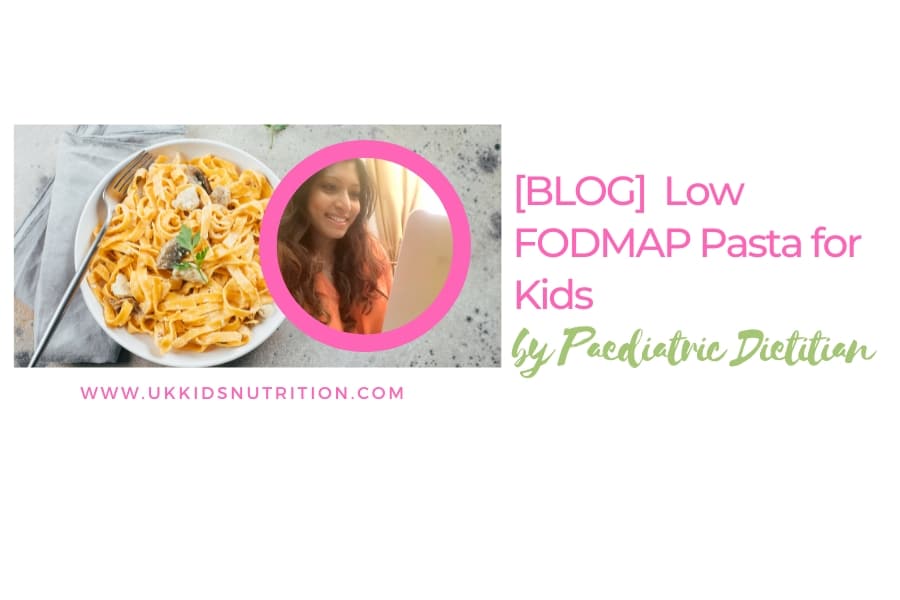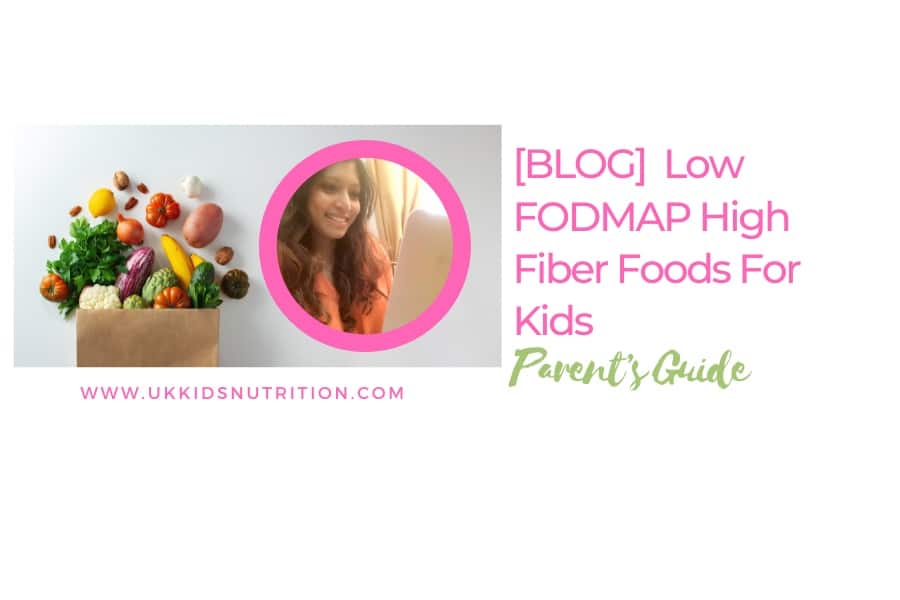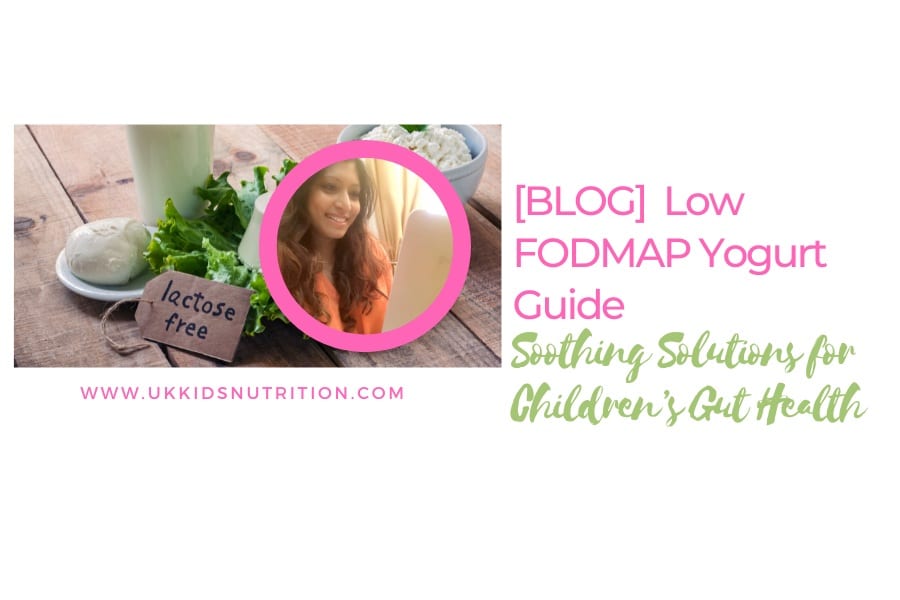Peas are every kid’s favourite vegetable so you are probably wondering ‘are peas low FODMAP?’
Peas are an easy feel-good veggie that pairs beautifully with fish fingers on fishy Fridays.
If your child is struggling with tummy troubles and has been recommended to follow the kid’s version of the low FODMAP diet, you might be unsure whether peas should be off the table.
So you search: Are peas low FODMAP for kids?
In this blog article, we’ll cover whether peas are low in FODMAPs or whether you need to restrict this vegetable for children with tummy troubles and IBS Kids.
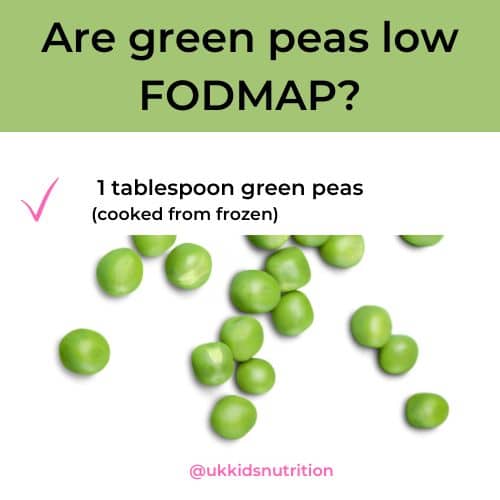
Are green peas a low fodmap food?
FODMAP is an acronym.
It stands for:
- Fermentable
- Oligosaccharides
- Monosaccharides
- and Polyols
FODMAPs are a group of fermentable carbohydrates that resist digestion by the stomach and pancreatic enzymes, travel undigested to the large part of the bowel, can release gas and move water in and out of the bowel.
For adults and children diagnosed with irritable bowel syndrome, a high intake of foods rich in FODMAPs during IBS flares can trigger tummy troubles like abdominal pain, bloating, diarrhoea and constipation.
If you are not sure what IBS is, read IBS Poop Chart & IBS Explained.
For this reason, it’s important to understand your child’s unique trigger foods and the quantity they can eat without upsetting their belly.
Green peas are one of those vegetables that you do need to approach with caution.
Contrary to what you may read online, green peas are not a low fodmap food.
Having said that, children can still enjoy green peas daily if they want to. They’ll just need to make sure that they only eat a low-fodmap serving size when first starting the modified child-friendly version of the low-FODMAPs diet.
According to the analysis by Monash University, a low FODMAP serving of frozen green peas is 1 tablespoon.
This may come as good news depending on whether your child is a pea lover or not.
To help you in this scenario, I always recommend serving a variety of vegetables with meals in order to avoid fodmap ‘stacking’.
Also, see – Is Broccoli Low Fodmap?
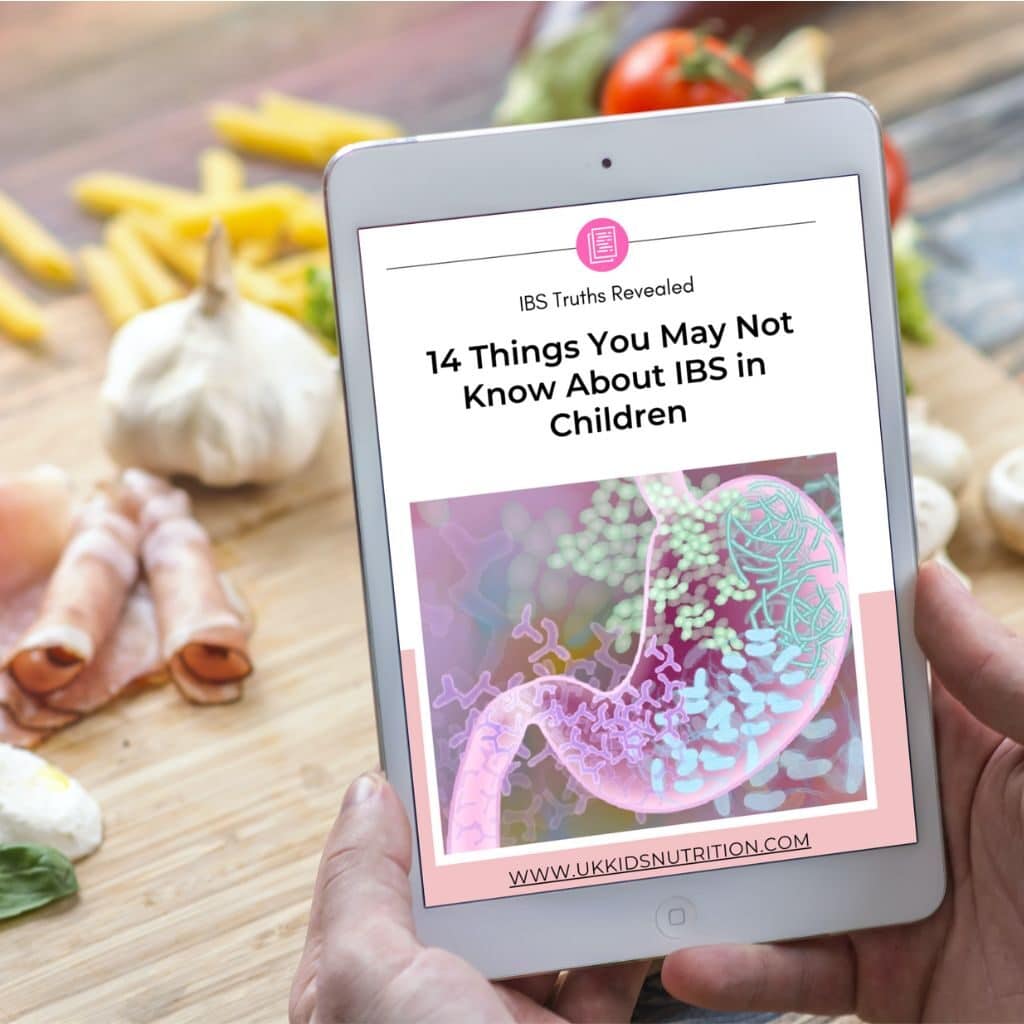
Why are green peas high FODMAP?
The main FODMAP present in peas is oligosaccharides called galactooligosaccharides (GOS).
This type of carbohydrate is considered to have prebiotic actions.
This means that it can play an important role in increasing bacterial abundance and improving dysbiosis.
Prebiotics are non-digestible carbohydrates which resist acid in the stomach and escape digestion by pancreatic and small bowel enzymes in the small intestines.
Prebiotics are unique in that they selectively feed and nurture the growth of beneficial bacteria in the gut. When gut bacteria feed on prebiotics, they release short-chain fatty acids.
This lowers colonic pH which selectively promotes the growth of beneficial gut bacteria called lactobacilli and bifidobacteria and suppresses the growth of undesirable bacteria.
As humans lack the enzymes to break down oligosaccharides like GOS found in peas, it is not absorbed in the small intestine. So it travels down to the large intestine.
When gut bacteria feed on foods containing GOS, as described above, this produces gas which can cause flatulence.
Passing gas is a sign of a healthy bowel.
In adults and children with IBS, the presence of gas can be interpreted by the body as abnormal which can trigger pain and gut-related symptoms such as tummy pain and altered gut motility.
What are the health benefits of peas?
Peas are a nutritious vegetable that also provides fibre, protein and other nutrients.
For every 100g of cooked frozen peas, you get:
- 5.5g protein
- 11.0g carbohydrates
- 70 kcal
- 5.5g dietary fibre including prebiotics
- 177mg potassium
- 37 mg calcium
- 1.8 mg iron
- 0.8 mg zinc
- 0.4 mg thiamine
- 0.08 mg riboflavin
- 12 mg vitamin C
- 31 ug folate
Strictly speaking, green or garden peas are part of the legume family.
Green peas contain prebiotic fibres which play a vital role in promoting gastrointestinal health in both children and adults.

What are the health benefits of prebiotics?
- Improved vitamin and mineral absorption, particularly calcium
- Suppresses pathogenic bacteria
- Coordinates immune system functions
- Influences brain function
- Soften stools and improve diarrhoea
- Improves fat and sugar homeostasis
As you can see, green peas are a source of important nutrients like protein, fibre, prebiotics and other vitamins and minerals.
It’s also quick and easy to prepare.
So if your child doesn’t experience any symptoms after eating peas, try not to avoid them from your child’s diet as it is a very nutritious vegetable.
It’s also a source of prebiotic fibre that the gut bacteria love to feast on.
Are canned peas low FODMAP?
The process of canning and boiling can reduce the level of FODMAPs in high FODMAP foods.
For this reason, children may tolerate a bigger serving of peas if they choose tinned versus fresh or frozen varieties.
A low FODMAP portion of tinned peas is ¼ cup.
This is a significantly generous portion in comparison to fresh or frozen peas.
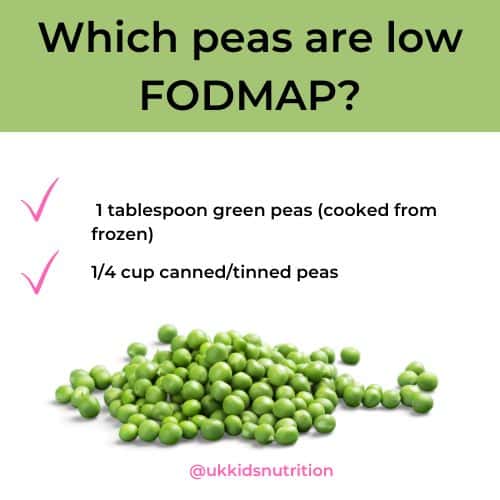
Are snow peas low FODMAP?
Similar to green peas, snow peas are rich in prebiotics and therefore are not a low FODMAP food.
The main FODMAP in snow peas are fructans, mannitol and GOS depending on how much your child eats.
If you are working with a registered dietitian trained to advise you on the use of the low FODMAP diet, your child may be recommended to eat only a small portion of some high FODMAP foods.
A low FODMAP serving of snow peas is 5 pods.
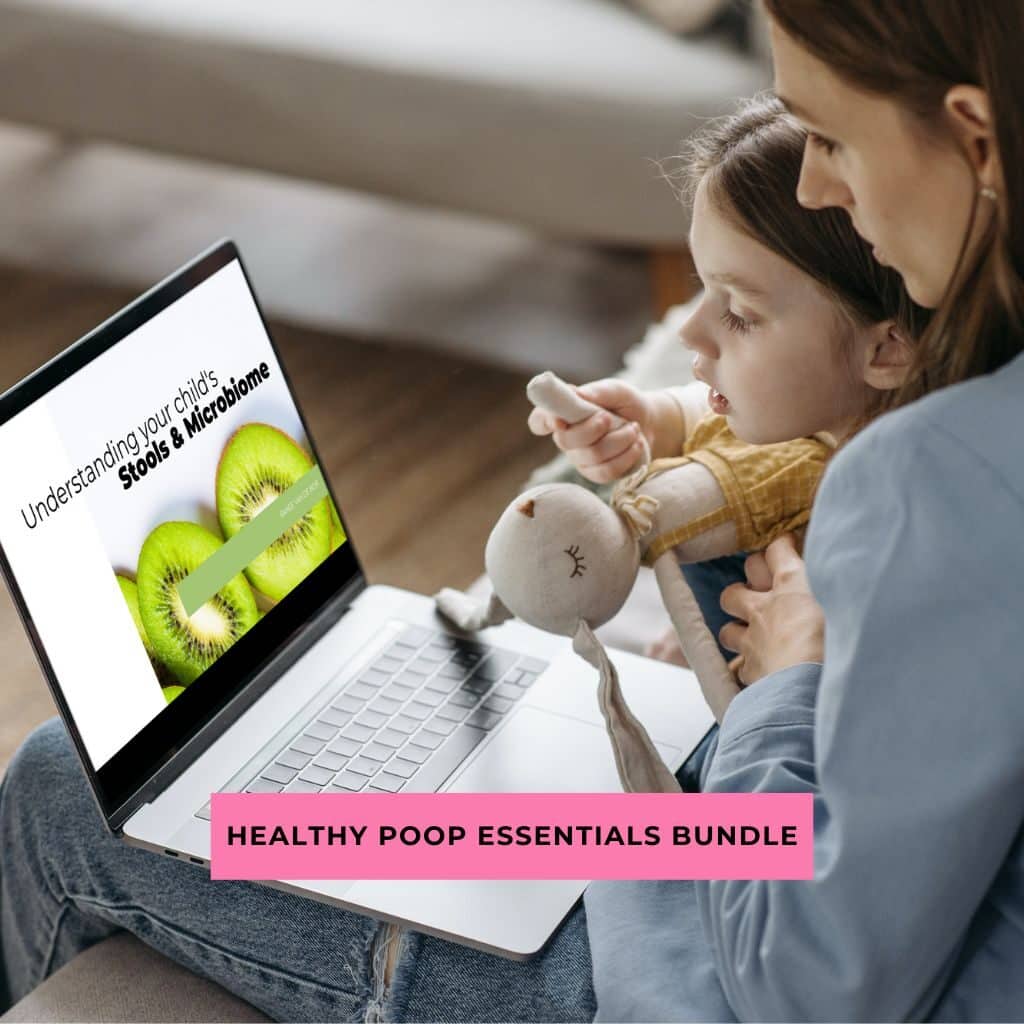
Are snap peas low FODMAP?
Sugar snap peas are also a high FODMAP food.
A low FODMAP serving size is 4 pods per meal.
Unlike other peas, sugar snap peas do not contain prebiotics.
Are chickpeas low FODMAP?
Unfortunately, as chickpeas are part of the legume family, they are not low in FODMAPs.
The good news is that choosing tinned or canned chickpeas can significantly lower their FODMAP content.
Most children will be able to enjoy a small number of chickpeas in a dish or in homemade hummus.
However, individual food triggers will vary considerably from child to child.
Peas and chickpeas are highly nutritious foods that contain prebiotics.
You now know that prebiotics is an essential nutrient that helps feed the friendly bacteria in the gut.
Bottomline
This article should now answer your question: are peas slow FODMAP? Depending on portion sizes eaten, peas can be both high and low in FODMAPs. In general, according to Monash University’s analysis, peas are a high FODMAP food.
As it’s a highly nutritious food, intake should only be limited during IBS flares or when first trying to understand your child’s food triggers. Always work with a registered dietitian specialising in irritable bowel syndrome in children. My IBS Kids Mastery Method is a programme that will help you identify your child’s unique triggers and help them feel better.
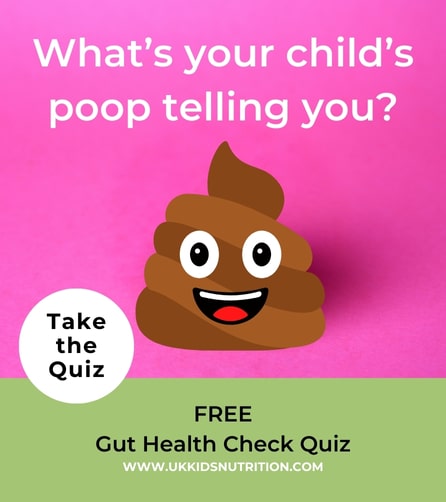
Let Me Help
Is your child struggling with constipation, bloating/tummy pain or loose stools?
Then my proven Happy Belly Formula will help.
- 1-2-1 Happy Belly Club
- Or book a discovery call to learn more about the programme


